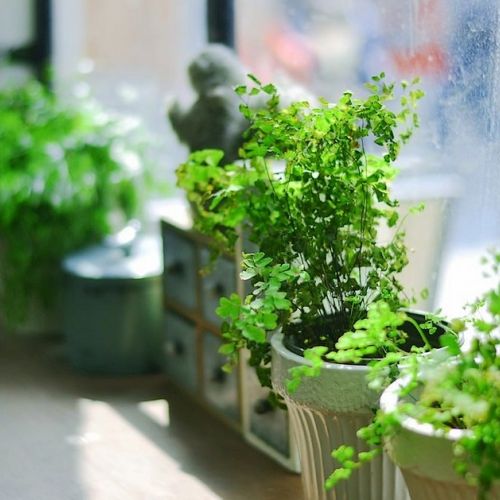Drought: How To Prepare Your Vegetable Garden For A Dry Spell?
Faced with the drought that has affected France since August 2021, gardeners are forced to review their growing methods. As watering restrictions are to be feared next summer, you must now anticipate the lack of water and make choices when planting and sowing your vegetables. We explain how to prepare your vegetable garden for a dry regime in 5 points.
1- Don't think too big
Spring will soon be here and, for many gardeners, it's time to choose what to plant and sow in the vegetable garden. While it's only natural to want to diversify your crops, the drought that has been in the news for several months in France should prompt you to be reasonable about how much you plant and sow.
The rainfall deficit to date is about 15%, according to the Ministry of Ecological Transition, and the situation is more severe than last year at this time. Unless we have a particularly wet spring, watering restrictions are very likely next summer.
The first tip for preparing your vegetable garden for the dry regime is to adjust the size of your food garden to the number of people in your household. Don't sow or plant too many different varieties, or you may have to sacrifice some of your plants if a heat wave hits in a few months.
To put it another way, don't spread yourself thin experimenting with new crops, but focus your efforts and watering on the vegetables you really want or need.
2- Choose drought-resistant vegetables
As gardeners know, lack of water is always a problem in the vegetable garden, especially during heat waves and watering restrictions. Nevertheless, some vegetables can handle the lack of water better than others. Another way to prepare your vegetable garden for a dry regime is to grow the hardiest vegetables.
Although they are generally considered 'Mediterranean' or summer vegetables, tomatoes, peppers, eggplant, zucchini and melons have the disadvantage of requiring regular watering. They are crops that do not tolerate lack of water.
Conversely, root vegetables such as yam potatoes, carrots or parsnips are more drought resistant. Some leafy vegetables also show good resistance to lack of water such as cabbage, lamb's lettuce or batavia lettuce.
Among the vegetables that require less water are peas, beans and broad beans as well as alliums such as garlic, onions and shallots.
3- Mulch without moderation
Once your plants are in place, if you have to remember only one thing to do for maintaining a dry vegetable garden, it is definitely mulching! Mulching the soil has only advantages because it limits evaporation, reduces water stress on plants and improves soil structure.
Useful in any season, mulching is even more essential in summer, to protect the soil from direct sunlight and retain moisture at the foot of plants.
The third tip for preparing your vegetable garden for a dry regime is therefore to provide a good thickness of mulch, favoring plant materials such as straw, nettles or green waste such as grass clippings.
In practice, you should spread on the ground a mulch 8 to 10 cm thick, preferably right after watering and lightly scratching the soil. Once this mulch is installed, water directly with the neck of the watering can (without a knob) so that the water flows more easily through the thickness of mulch.
Note:in addition to mulching, another trick to limit evaporation in the garden is to shade your plants (see our article opposite).
4- Collect as much rainwater as possible
If you haven't already, spring is the perfect time to get a rainwater catchment to connect to a gutter.
In anticipation of the likely upcoming water restrictions, you should collect all the water you can without fail, in tanks on rainy days but also in your kitchen when rinsing vegetables for example.
Take advantage of spring showers to collect rainwater that falls on your roof. Polyethylene tanks with lids and taps are readily available in garden and DIY stores.
Water harvesting is the fourth tip for preparing your garden for a dry spell. It is an ecological reflex that will also allow you to save on your water bill.
To note: it takes between 150 and 500 liters of water per year to water a vegetable garden of less than 50 square meters but between 500 and 1500 liters per year for a garden of between 50 and 100 square meters.
5- Adopt good watering habits
Even if you want to prepare your vegetable garden for a dry regime, you don't have to stop watering completely! In spring, vegetation that is starting to wake up needs water. So you should water your seedlings and plantings sparingly and efficiently.
In order for the water to reach the roots of the plants, you should water copiously and slowly at the foot of the plants and not by sprinkling. This advice also applies when water is rationed. In summertime restrictions, since you can't water every day, it's best to do a copious watering down to the roots every two to three days.
Another trick to optimize watering is to circle each plant with a small bowl that will prevent water from running off during watering and during showers.
Finally, note that during hot spells, it is advisable to water in the evening just before dark. This way, the water you give the plants does not evaporate too quickly and your plants can take full advantage of it all night long.
On the other hand, if the days are warm but the nights are cool, it is better to water in the early morning to avoid the development of fungal diseases like mildew and the invasion of the garden by slugs.








